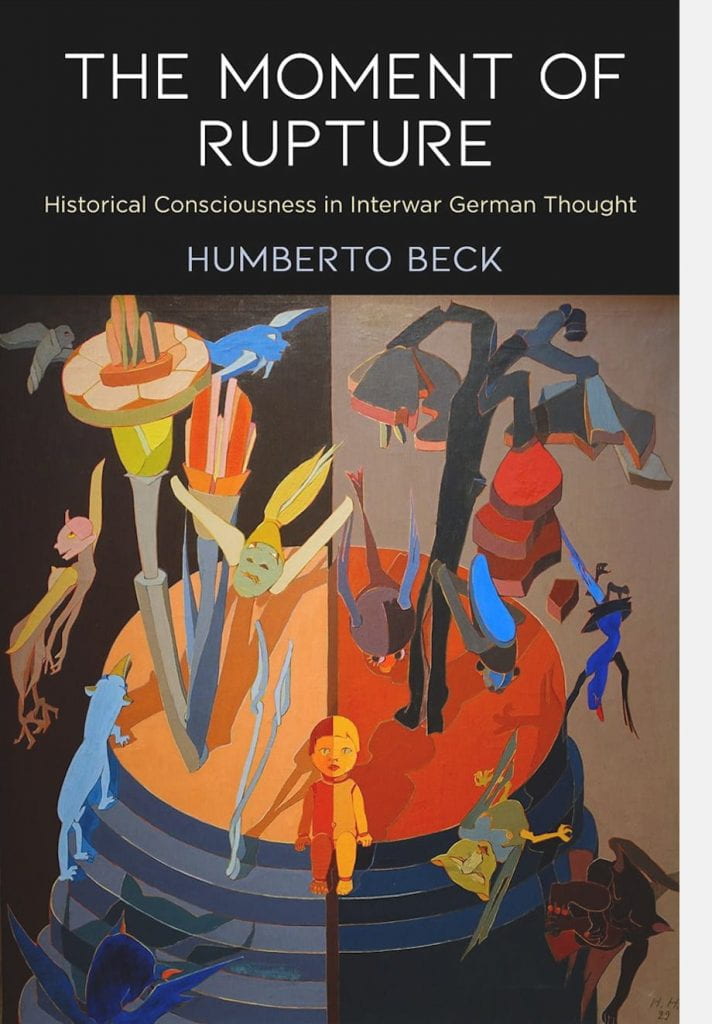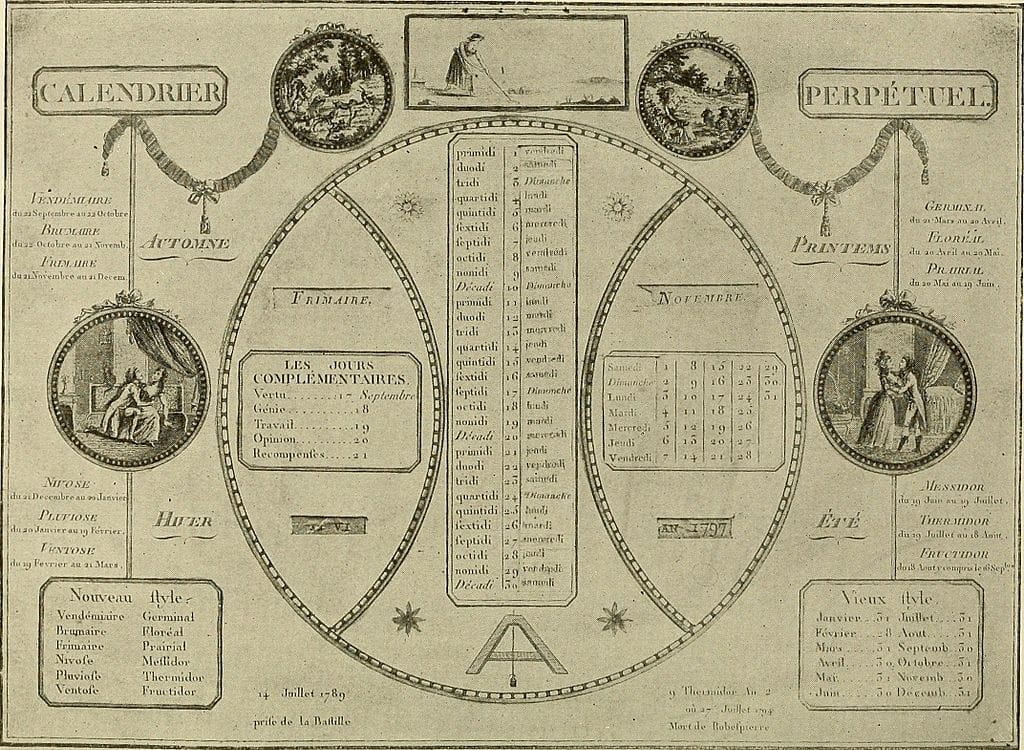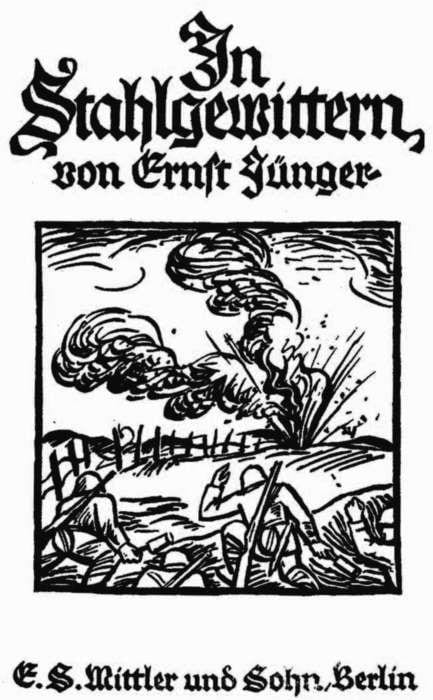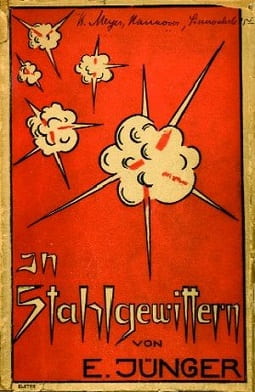By Jonathon Catlin

Humberto Beck is Professor at the Center for International Studies at El Colegio de México in Mexico City and author of The Moment of Rupture: Historical Consciousness in Interwar German Thought (2019), which was published in the series Intellectual History of the Modern Age by the University of Pennsylvania Press. Focusing on the writings of three German thinkers—Ernst Jünger, Ernst Bloch, and Walter Benjamin—Beck argues that “between 1914 and 1940, in response to the experiences of abrupt discontinuity and social and political rupture, a new form of historical time consciousness was born in Germany, which articulated itself around the notion of instantaneity.” These thinkers, he writes, drew upon personal and collective experiences of war, crisis, catastrophe, and revolution to produce “a constellation of concepts and figures of sudden temporality that contributed to the formation of a distinct instantaneist ‘regime of historicity’—a mode of experiencing time based on the notion of a discontinuous present.” The book’s introduction is freely available online from the publisher. Contributing editor Jonathon Catlin interviewed Beck about the book.
Jonathon Catlin: The Moment of Rupture defines the instant as “the shortest span in which time can be divided and experienced.” It is, then, “a moment without time…in which there is no interval or duration, no before or after, but only an atemporal present.” We find some notion of the instant already in Plato, but Aristotle’s contrary view of the continuity of time was long predominant. Chapter 1 describes “the essential discontinuity of time,” as Gaston Bachelard wrote in The Intuition of the Instant (1932), as a modern insight that you trace back to Goethe. Your book argues that instantaneity functioned as a concept from Plato to Nietzsche; as a “systematic discourse of temporal consciousness” from Goethe to the French Revolution; and finally as a full-fledged “regime of historicity” in interwar Germany that superseded the historicist temporal regime the German conceptual historian Reinhart Koselleck identified as the hallmark of modernity in the Sattelzeit (1750–1850). You thus deem the era of the instant, from 1914–1940, a “second Sattelzeit,” with the first, historicist “time of transition” giving way to a counter-temporality that was ahistorical and antihistorical. Can you elaborate on this idea?
Humberto Beck: Koselleck gave the name of Sattelzeit to what he considered the “axial time” of modernity, when most of the fundamental modern temporal concepts were coined. According to Koselleck, what all these concepts had in common was their historical nature: they all entail a linear, cumulative, usually progressive vision of history, with some kind of abstract ideal or utopia as a destination point or goal. However, when one reads the Weimar and Nazi era writings of authors such as Jünger, Bloch, and Benjamin—and others such as Carl Schmitt, Karl Jaspers, or Martin Heidegger—one realizes that many assumptions behind the Sattelzeit understanding of modern time did not really apply to the experience of modernity these thinkers described. This is especially the case with the notion of crisis. For Koselleck—as for Marx—the idea of crisis certainly implies a convulsion, a moment of profound change, but always within the larger frame of a historical vision of growth, continuity, evolution, or transformation. Paraphrasing Georg Lukács, one could even say that, within this historicist perspective, crises are moments when the coherence of a larger temporal entity or “whole”—History with capital “H”—is ultimately revealed. The classical Marxist interpretation of revolution is the example par excellence of this vision. But for a number of significant Weimar authors, crisis denotes not a convulsion within the flow of historical development, but a moment, as it were, “outside of history,” in which the connections to the past of tradition or the projections of the future are suspended. This description of the “absolute present” of rupture (or the “instant”) as a historical category represents what I believe is most original in the work of Jünger, Benjamin, and Bloch, because it constitutes an extrapolation of the concept of the instantaneous present to the realm of historical and political experience. The depth of their intellectual elaboration, as well as the coherence between their works despite their otherwise entirely antagonistic ideological positions, persuaded me that, taken collectively, the work of these authors could be considered as the foundation of a new, second Sattelzeit or “axial era” for the coinage of new concepts of temporality. These concepts responded to the historical conditions of a new phase of modernity and helped to formulate a distinct experience of historical time, which I call instantaneism.
JC: You characterize your protagonists as responding to a common challenge of their era: “how to name the novel experiences of rupture in historical consciousness and individual perception.” They developed the instant as a category that was simultaneously philosophical, aesthetic, and political. To what extent do you consider your book a “conceptual history” (Begriffsgeschichte)? How do you distinguish when this notion functions as a concept, a metaphor, a figure, a trope, a motif, an image, a discourse, a mode of experience, or more than one of these at the same time?
HB: Methodologically, the book combines aspects of “conceptual history” in a more orthodox sense (situating a concept or idea within larger frames of social meaning) with elements of a more traditional, “internalist” history of ideas approach. This eclectic course of research was called for by the particular conceptual and historical nature of my object of study. Instantaneity—the “time without time,” the moment of sudden rupture—is both an age-old (in a certain way, “timeless”) notion for philosophy and religion, as well as a keyword of modernity. How to make sense of this diversity of meanings and historical significations? My approach was to differentiate between three dimensions of instantaneity in intellectual history: instantaneity as a concept, as a discourse, and as a regime of historicity. A notion such as “the instant” can be pervasive in poetic or literary texts, or in philosophical or theological reflection of diverse historical epochs without necessarily permeating into the perception of a larger public or shaping general intellectual orientation. Taking this into account, my distinction between these three dimensions of the unfolding of instantaneity responds to a series of “leaps” in the social ramifications of the concept and its usages. I argue that recourse to “instantaneity” in literature and poetry (motifs of the “fleetingness of life” or the transient nature of experience) or in philosophy and theology (the brevity of intellectual insight or of mystical experience) has usually reduced the instant to a concept. Generally, this usage has not given way to larger cultural discourses, which I believe began to happen only in modern times, for example, in the French Revolution and German Romanticism. But this deployment of the “instant” as an intellectual discourse is still different from its role as a fundamental reference in the shared historical and political vocabularies of an era, a keyword suited to make sense of collective experience. The instant as a discourse and as a regime of historicity are, I argue, exclusive to modernity, and instantaneity as a chronotope is exclusive to the twentieth, and perhaps twenty-first, centuries.
JC: The German term Augenblick has obvious metaphorical qualities: It literally means the “blink of an eye,” or, more poetically in Goethe, “moments of vision.” Interestingly, you charge both Koselleck and Hans Blumenberg—among other postwar German thinkers—with the “antiradical tendency” to neglect the instant in their respective studies of concepts and of metaphors. You suggest that considering the instant as only either a concept or as a metaphor risks sacrificing its radical potential. Alternatively, you identify radical possibilities in your authors’ attempts a generation earlier “to present crisis, catastrophe, and danger as new bases of perception” that challenge historicist progress narratives. Key cases include Benjamin’s praise for the introduction of the Republican calendar during the French Revolution as a “revolutionary interruption” or “standstill” that could “make the continuum of history explode” and Vladimir Lenin’s “seizing of the moment” in the 1917 Russian Revolution. Why is it chiefly the political left that has gained from claiming “authentic instants” and the “actuality of the now”?

HB: I believe this prominence of the left in the claiming for “authentic instants” of rupture can be explained by the centrality of the idea of revolution for this political tradition. Although in its usual interpretation the idea of revolution tends to be subsumed into a historicist vision (as I believe it happened in the case of Lenin), because of its emphasis on radical rupture revolution is also, as it were, a “step closer” to an affirmation of pure instantaneity. This is especially true if a Marxist ethos is combined with “exogenous” lineages of thought, such as Jewish or Christian messianism, or anarcho-syndicalist beliefs in a mythical suspension of time. Given conservatism’s emphasis on stability or tradition, this ideological perspective tends to find trouble in celebrating the political potential of the “actuality of the now.” However, as the cases of Jünger and Schmitt show, there is indeed an instantaneism of the right, less concerned with emancipatory or egalitarian projects, and rather more interested in the authoritarian consequences that the vitalist experiences of “decision” and “the exception” may entail.
JC: Because of its timelessness, the instant has long been associated with the religious experience of the eternal in the ephemeral. You write that the experience of the instant “creates the space for a certain ‘revelation’” and hence that instantaneity belongs to the broader “reenchantment of modern temporality,” as seen in Kierkegaard’s conception of the instant as a site of the radical freedom of faith, in Bloch’s writings on utopia and hope, in Benjamin’s famous notions of “messianic time” and “profane illumination,” and even in Jünger’s recovery of primeval pagan fate. To what extent is the modern instant a secularized religious notion?
HB: The modern instant is a secularized religious notion to the extent that the rhetorical figure it entails—the paradoxical manifestation of the eternal in the temporal—supposes a certain “theological” way of reasoning, even if only at the level of a structural analogy. In a way, this is not new: as Karl Löwith and others have argued, modern historicist visions of progress could already be interpreted as secularized versions of religious redemption and messianic hope. I believe the secularized religious element is even more prominent in instantaneism. It is difficult not to perceive that for authors from Jünger and Schmitt to Benjamin and Bloch, religious experience in the broadest sense (as mystical union, theophany, miracle, or revelation) was a major, if not the predominant model for conceptualizing human experience as such.
JC: You also argue that each of your three authors sought to fashion a new conception of experience that corresponds to avant-garde aesthetics: Jünger’s experience of “danger” relates to the image of “terror”; Bloch’s “darkness of the lived moment” corresponds to a sense of “noncontemporaneity”; and Benjamin’s interest in “shock” corresponds to his notions of “now-time” (Jetztzeit) and the “dialectical image.” Chapter 2 shows how the avant-garde genres of collage and montage—which juxtapose incoherent or disconnected fragments—contributed not only to new forms of sensory perception, but also to a new form of historical consciousness. How does your book set the history of ideas in conversation with cultural history?
HB: The instantaneist regime of historicity is deeply imbricated with the phenomenon of avant-garde aesthetics. This is, as it were, the “hinge” that connects more historical and collective experiences of instantaneity with their counterparts in the sphere of the individual, subjective psyche. This is why I attempt to trace the powerful influences of Dadaist and, above all, Surrealist aesthetics in the authors’ understandings of temporality. In the avant-garde aesthetics of surprise and shock, Jünger, Bloch, and Benjamin found a conceptual frame of reference with which to make sense of analogous experiences they were encountering in politics and social life. The conversation between the intellectual history of the Augenblick and the cultural history of the avant-garde productively illustrates the existence of the instantaneist chronotope: that in interwar Europe there was a common temporal sensibility centered around suddenness as a category for making sense of contemporary experience. The extrapolation of the avant-garde principles of surprise and shock from the realm of aesthetics to the sphere of politics (not a “one-way street” at all) constitutes a core tenet of instantaneism. Hence the importance of a figure such as Hannah Höch (1889–1978), a German Dadaist collage artist who pioneered the aesthetics of juxtaposition, and whose work can be found on the book’s cover. Höch, in fact, was particularly influential in the development of Benjamin’s interpretations of modern perception and historical temporality. But montage was equally important to Bloch, as he saw in this avant-garde technique something akin to an expression of the deep historical meaning of the era.

JC: You write that the violent historical ruptures that shook Europe in the years after 1914—war, revolution, economic crisis, mass strikes—“generated an intense sensation of discontinuity, both historical and perceptual.” Jünger called himself a “seismograph” of this turbulent era, and Benjamin, in turn, called it a “state of continuous emergency.” You argue that crisis was most intense in the crucible of interwar Germany; hence it was there that instantaneism came to constitute “a crucial element of the ‘common intellectual horizon’ of an entire era.” Your book thus poses a classic question of intellectual history: “the relationship between ideas and events.” You describe “a certain correspondence” or an “‘elective affinity’ between the experiences of crisis and rupture and the instant as a conceptual device,” in which historical circumstances allowed the instant “as a notion, to posit certain questions that would remain obscure under a conventional understanding of temporality as continuous duration.” What did the experience of crisis reveal about temporality generally? Was instantaneity unthinkable outside of crisis?
HB: Your questions point to one of the great paradoxes or, rather, aporias, of instantaneous temporality. By definition, the instantaneous is sudden, unpredictable, and exceptional. But the more closely one studies the structure of instantaneity, the more one realizes its deep connection to the structure of temporality in general. One realizes that time as such, in its generality, is in fact composed of the chaining together of these exceptional moments. One could interpret the history of the philosophy of time as a pendular movement between the two poles of this aporia. Incontestably, the work of Jünger, Bloch, and Benjamin is situated on the more “exceptionalist” pole of this movement. This can be explained by their shared experience of crisis, which had a powerful effect on the collective psyche of the era, not only because of its intensity, but also owing to its contrast with what had come before: the perception of a “golden age of security” (Stefan Zweig) marked by stability and the indefinite continuation of progress. For these authors, the experience of crisis in war, violence, and revolution amounted to a revelation: that of the utter failure of all visions of continuity (either Enlightened progress or Bergsonian durée) to make sense of modern temporal experience. The key moment of this realization was the two-way process of extrapolation between the personal and the historical (aesthetic and political) dimensions of instantaneity. As a poetic or mystical experience, instantaneity had, of course, been previously thinkable outside of crisis. But it was not until the modern period, and especially the 1914–1940 era of repeated crises in Europe, that instantaneity became intelligible in terms that transcended the merely individual and subjective.
JC: You call the Fronterlebnis of the First World War “a catastrophe so exceptional and profound that it shattered all points of reference and all criteria for the meaningful organization of historical experience or the anticipations of the future.” You explore this through Jünger, a German war hero and popular war chronicler who celebrated technology, nationalism, and violence but also rejected Nazism. Jünger saw that “total mobilization” led not to security but instead to “a world of permanent crisis.” The war also gave rise to the psychoanalytic notion of trauma, as Freud and others treated disturbed soldiers. Benjamin wrote that they returned with new subjectivities, “not richer but poorer in communicable experience.” He likened the war’s effect to “the frame of mankind” being “shaken by a feeling that resembled the bliss of the epileptic.” In what ways is trauma, as interruption and repetition, the Augenblick’s dark double?
HB: There is indeed a very intricate (and perhaps disturbing) connection between Augenblick and trauma. They both point to an impenetrable and not fully intelligible kernel of experience. But these different facets have given way to different lines of interpretation. One the one hand, thinkers like Jünger have insisted on instantaneity (even its traumatic aspects) as a both terrible and irresistible irruption of “the primordial” within modern life, an irruption which, if properly channeled—to use his vitalist language—can bring about something akin to a “renewal” of authentic life. On the other hand, thinkers like Freud portray this kernel as the cause of neurosis and other disturbances in individual personality. One fascinating alternative that incorporates elements of both the Augenblick and trauma is Bloch’s interpretation of the “darkness” of the immediate present as both a disorienting experience and the place where hope manifests itself.
JC: Leading critics have characterized our current temporal regime after the “end of history” as “presentism” (François Hartog) or “the broad present” (Hans Ulrich Gumbrecht), emphasizing unchanging slowness, stagnation, paralysis, and continuity. This diagnosis precisely contradicts the instantaneist chronotope, “the irruption of an ‘event breaking into history.’” Whereas presentism is the “abolition of historical time,” you see instantaneity as “the very possibility of history,” conceived as “the irruption of ahistorical ‘now-times.’” However, in your conclusion, you suggest that the “return of the event” in the work of contemporary thinkers such as Alain Badiou, Giorgio Agamben, and Slavoj Žižek might offer a valid notion of instantaneity for our time. Their complaint is that history has stalled—that we don’t have enough events anymore—and they yearn for the “unexpected disruption of the flow of time that seems to emerge out of nowhere—an episode of singularity that opens up the horizon of thinking and action by introducing a previously inconceivable possibility.” What is the status of the instant today?
HB: I believe the work of Badiou, Agamben, and Žižek exemplifies a certain “nostalgia for the historical,” in the eventist sense of the irruption of the unexpected that opens up emancipatory possibilities. In a way, this is a foreseeable counter-movement both to the post-1989 decades of liberal-Hegelian triumphalism and the bleaker alternatives of Huntington-esque civilizationalist conflicts. In a certain way, the “event” has already happened, but with very different outcomes. The financial crisis of 2008, for example, was such an event, but it did not bring about revolutionary changes. Perhaps the contemporary instantaneist philosophy of the event can find its best historical analogue in the Sorelian myth of the general strike. As a genuine “myth,” it doesn’t matter much whether it actually takes place or not: It operates on another, more imaginary and symbolic level, which nevertheless aspires to affect political mobilization and transform state institutions. My general argument in this respect is that, notwithstanding the remarkable heuristic power of presentism as a theory of temporality, there are many aspects of the current experience of time that are not captured by the historicist/presentist dichotomy.
JC: You currently teach in Mexico and regularly speak on contemporary social and political issues there. Do you see any connections between those engagements and this book?
HB: Mexico is currently experiencing one of the most critical moments in its modern history. The levels of social inequality and criminal violence are staggering and, so far, do not show any signs of subsiding. The arrival two years ago of Andrés Manuel López Obrador (the first democratically elected left-wing Mexican president) to power was interpreted by many as the hoped-for “event” that would mark a before and after in Mexican politics and society. But it hasn’t, at least not yet. It is too soon to tell, because the actions of his presidency have been deeply ambivalent in many respects. It is perhaps in the sphere of social movements that recent Mexican history has experienced the most genuine moments of an instantaneist historical consciousness, such as the Zapatista uprising of 1994 or the intense social mobilization after the disappearance of 43 students from the rural school of Ayotzinapa, in Guerrero, in 2014. As a country that was born out of the great event of the Mexican Revolution more than a century ago, and which has ossified its subversive potential through corruption, bureaucracy, and ritual, Mexico is once again a nation in search of an event.
Jonathon Catlin is a Ph.D. Candidate in the Department of History and the Interdisciplinary Doctoral Program in the Humanities (IHUM) at Princeton University. His dissertation is a conceptual history of “catastrophe” in modern European thought. He tweets @planetdenken.
Featured Image: Book cover (detail). Hannah Höch,





